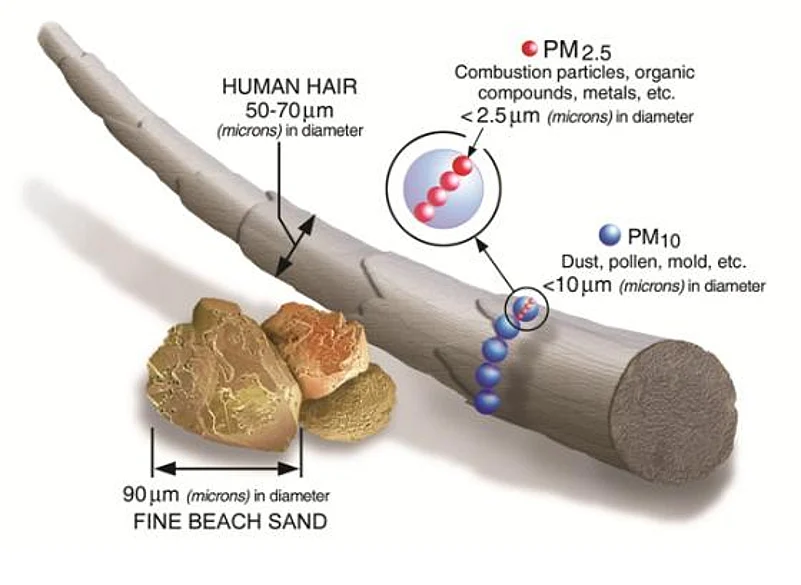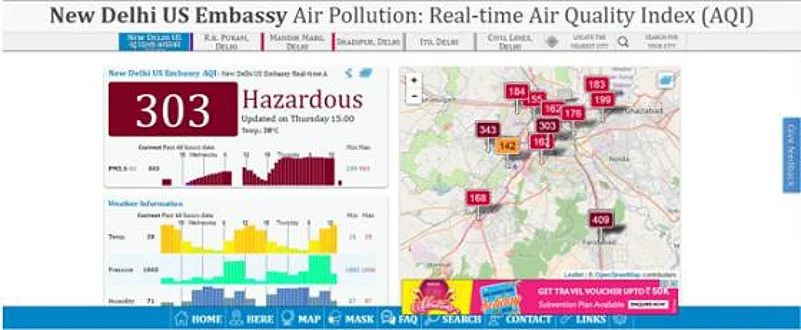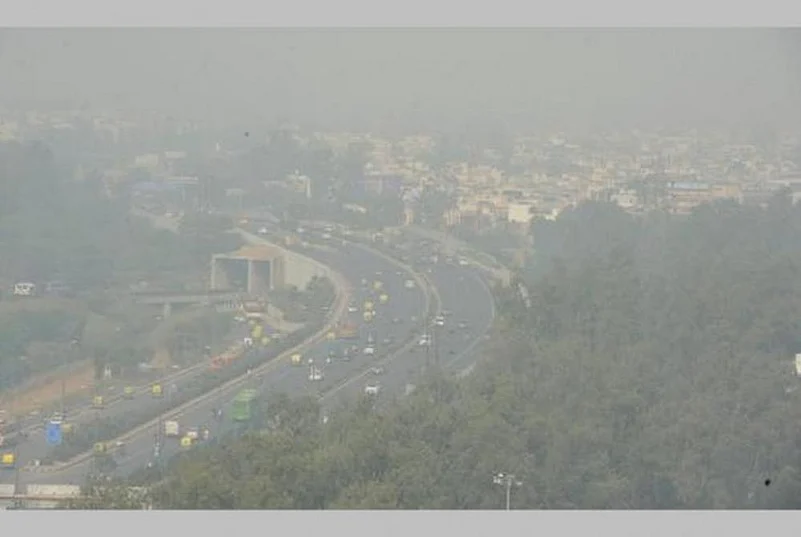It is big enough to scare away even the New York Times’ correspondent from India but small enough to be visible only to the most powerful electron microscope.
Particulate matter of 2.5 micro metre in diameter is fondly called PM 2.5 and it is spawned by the burning of crop stubble, fossil fuels and firecrackers. It is 30 times bigger than the diametre of a strand of human hair. To make it more comprehensible, let me tell you, a grain of fine coarse beach sand is 90 microns in diametre.
World Health Organisation says the PM2.5 level must not exceed 25 microgramme/cubic metre. As usual with most things related to quality, India has relaxed the limit to 60.
Advertisement

Image Courtesy: US E.P.A
Based on the level of particulate matters such as PM 2.5, PM 10, ozone, sulphur dioxide, nitrogen dioxide and carbon monoxide, the government figures out the air quality in a given area.
On Thursday, the Air Quality Index was 303, according to the US Embassy readings.

When the concentration of PM 2.5 reaches 253 mg/cubic metre, the Air quality Index reading reaches 303, which is hazardous, meaning: ESCAPE FROM DELHI.
In the early hours of the morning post-Diwali at around 2.30 AM, the PM2.5 was at 748µg/m³, which means the particulate matter concentration had breached the Air Quality Index scale of maximum 500.
Advertisement
WHO recommends that PM 2.5 be kept below 10 as an annual average. Exposure to average annual concentrations of PM 2.5 of 35 or above is linked with a 15% higher long-term death risk.
(Try your hand at this tool, which helps you make sense of the complex figures that the pollution control board throws at you every day. https://aqicn.org/calculator/)
A good AQI is anything below 100 and above 150 is considered unhealthy. Meanwhile, Delhi is perennially above 250.
So, what do these devilish little things do to your health?
PM2.5 is small enough to easily go past your nose hairs, slide through the nasal tube, wriggle into the tiny alveolis of the lungs and sneak into your bloodstream. Immediately, the particles could trigger flu-like symptoms of nasal congestion, cold and throat pain. In the long run, they can reach the heart and brain with ease, leading to Alzheimer’s or heart failure.
So, till the time the government clamps down on emitters of particulate matter, say your prayers to keep your innards safe.




















